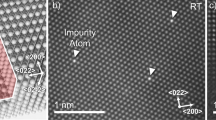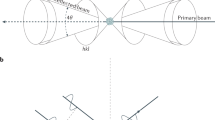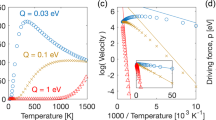Abstract
WE have recently applied high precision X-ray analysis to the study of the inter-diffusion of two metals in the solid state. Although the experimental work so far has been confined to mixtures of copper and zinc particles (heated in vacuo), enough data have been obtained to show that this new method has distinct advantages over the methods hitherto employed, and that it admits of wide application. Its two principal features are: (a) the direct measurement of a fundamental quantity, namely, lattice parameter (or mean atomic volume), while, in other methods employed to study this phenomenon, mean values of such quantities as chemical composition, width of zones, electric resistance, thermoelectric effect have been determined; and (b) each phase present at any time gives its own X-ray reflection lines independently, from which its composition can be readily found from standard composition-parameter curves.
This is a preview of subscription content, access via your institution
Access options
Subscribe to this journal
Receive 51 print issues and online access
$199.00 per year
only $3.90 per issue
Buy this article
- Purchase on Springer Link
- Instant access to full article PDF
Prices may be subject to local taxes which are calculated during checkout
Similar content being viewed by others
References
Ann. Chimie, 19, 201; 1923: 20, 131; 1923.
J. Inst. Met., 44, No. 2, 1930.
Author information
Authors and Affiliations
Rights and permissions
About this article
Cite this article
OWEN, E., PICKUP, L. Inter-Diffusion of Metals. Nature 130, 201–202 (1932). https://doi.org/10.1038/130201b0
Issue Date:
DOI: https://doi.org/10.1038/130201b0
Comments
By submitting a comment you agree to abide by our Terms and Community Guidelines. If you find something abusive or that does not comply with our terms or guidelines please flag it as inappropriate.



